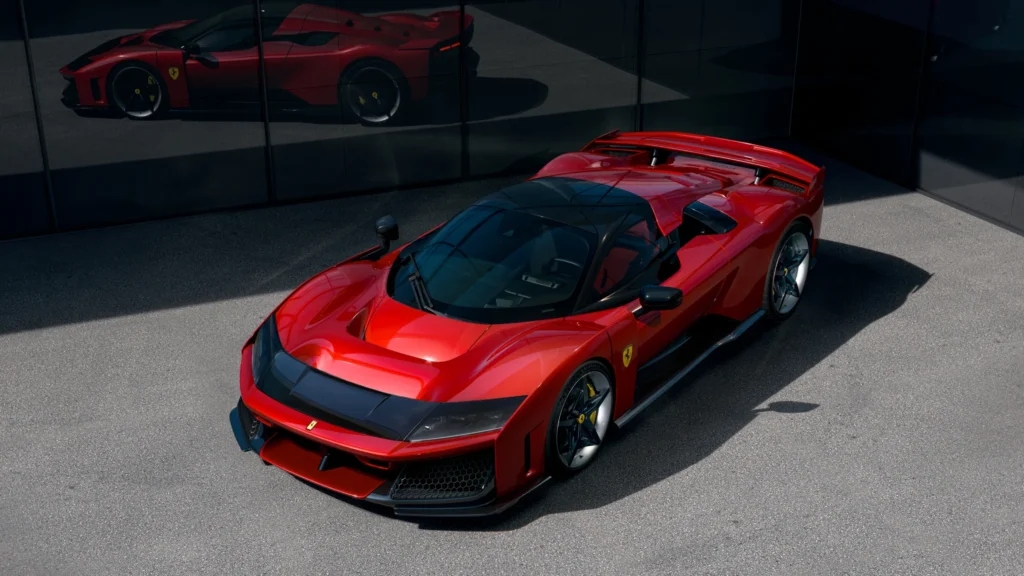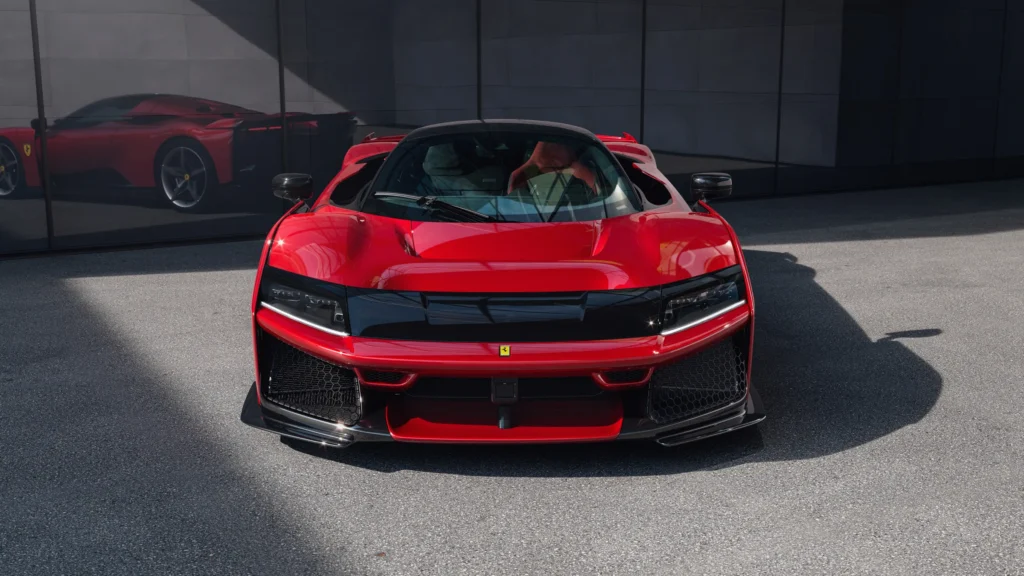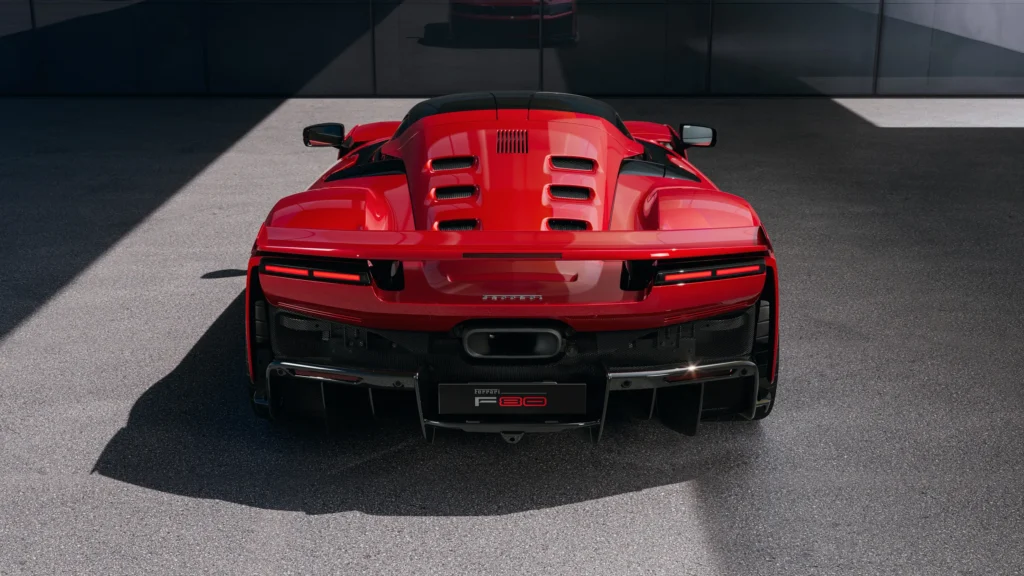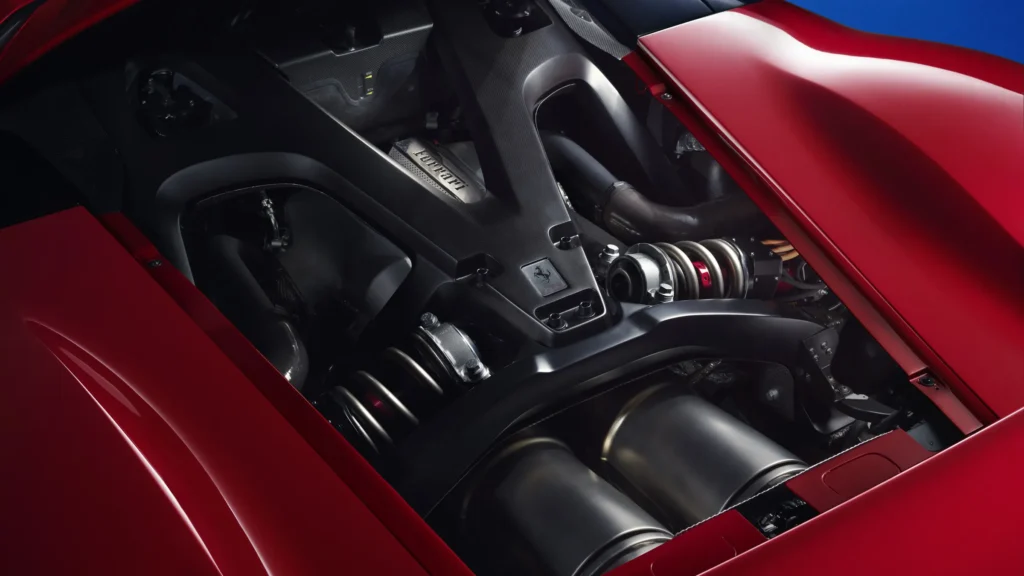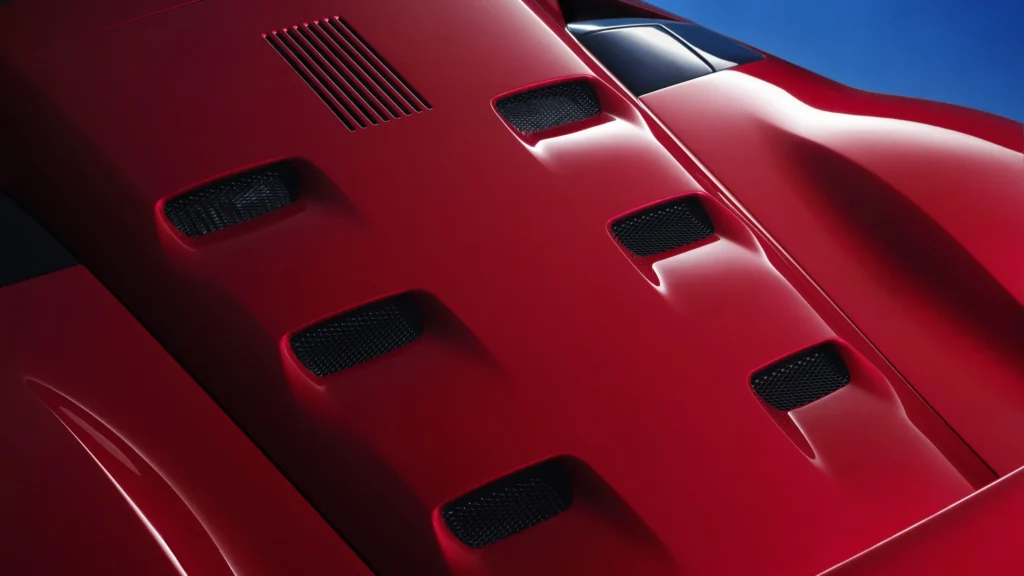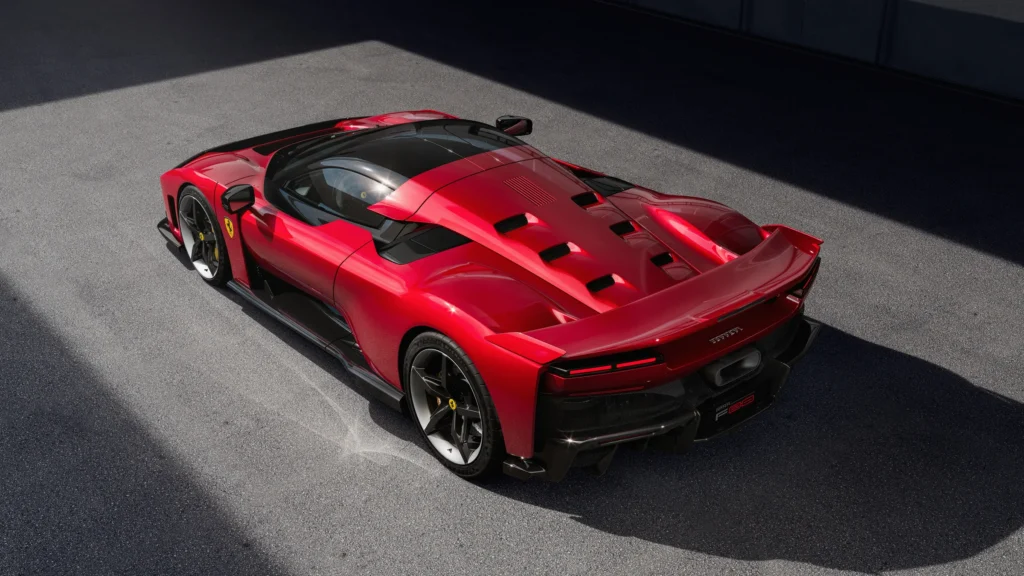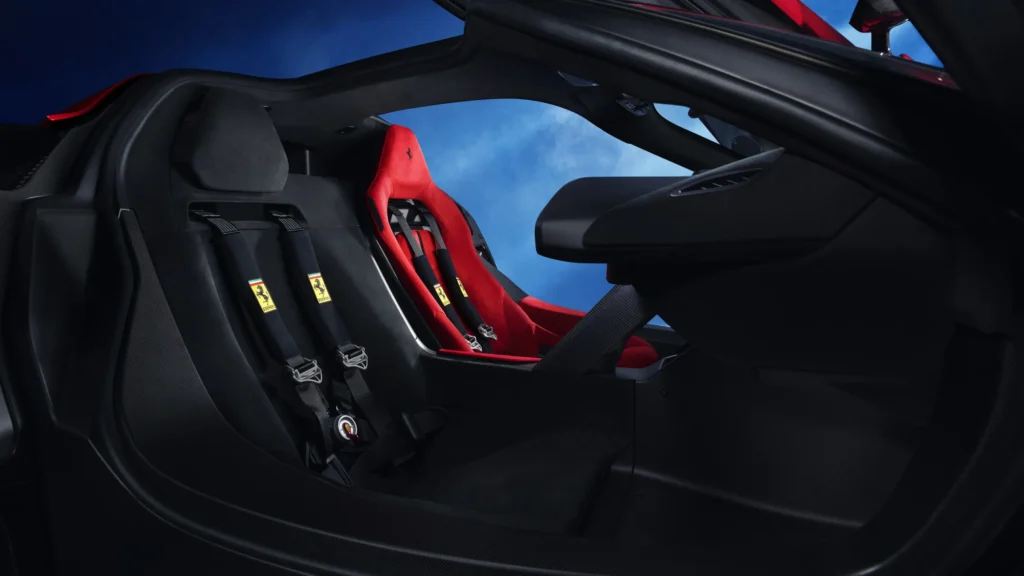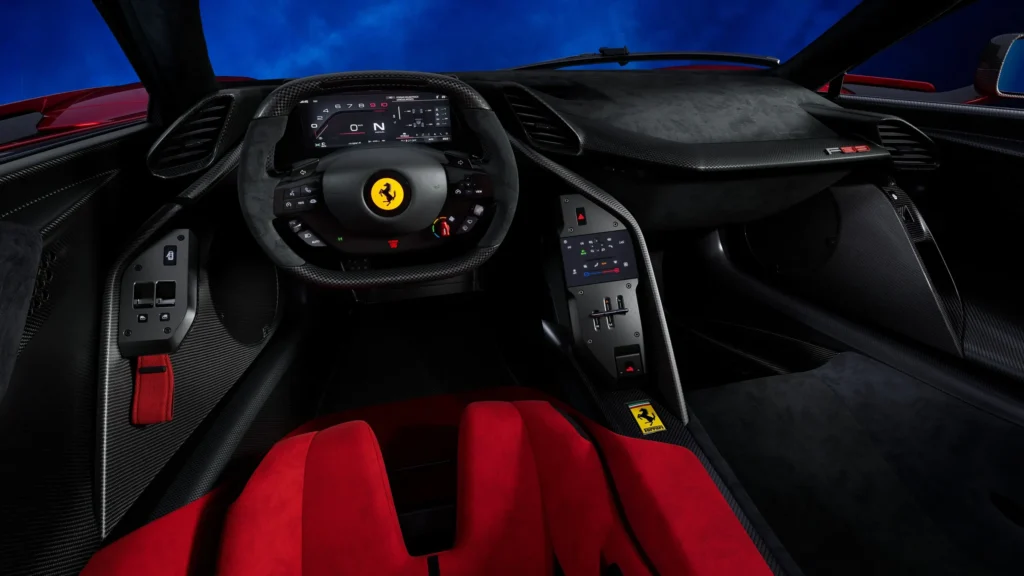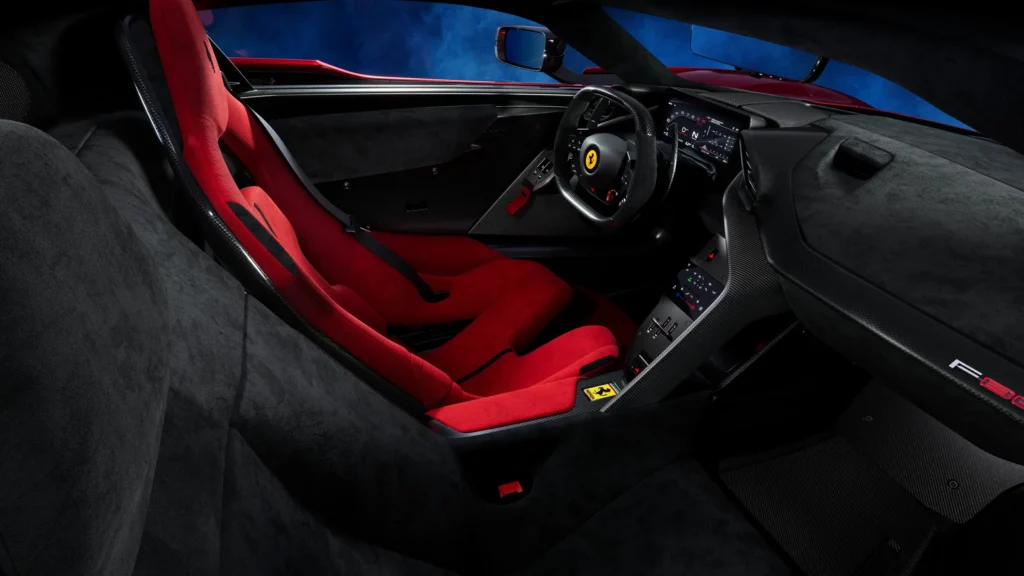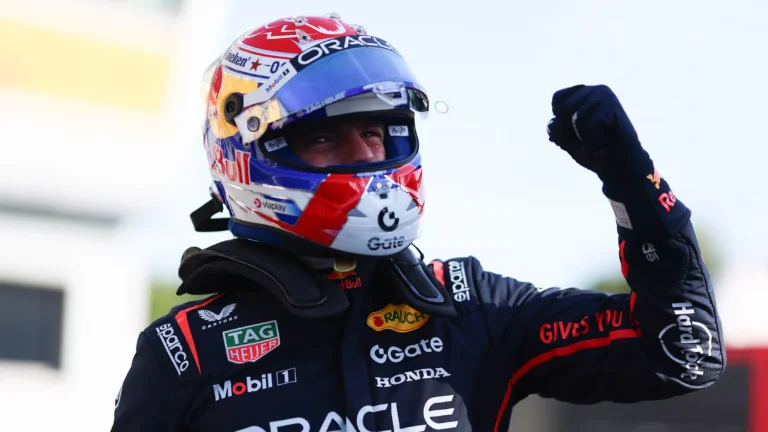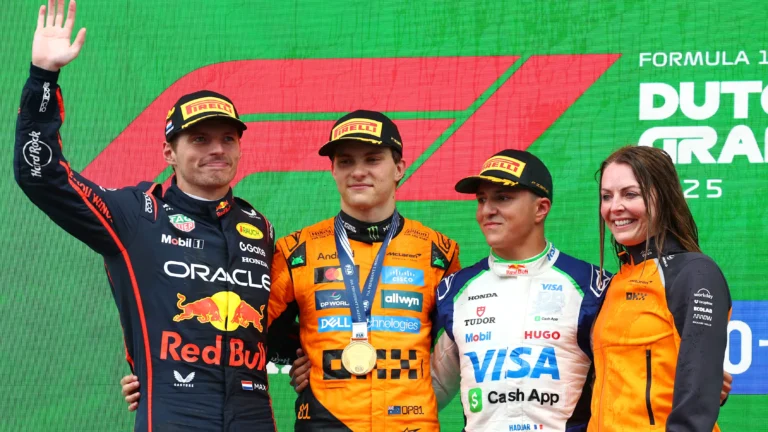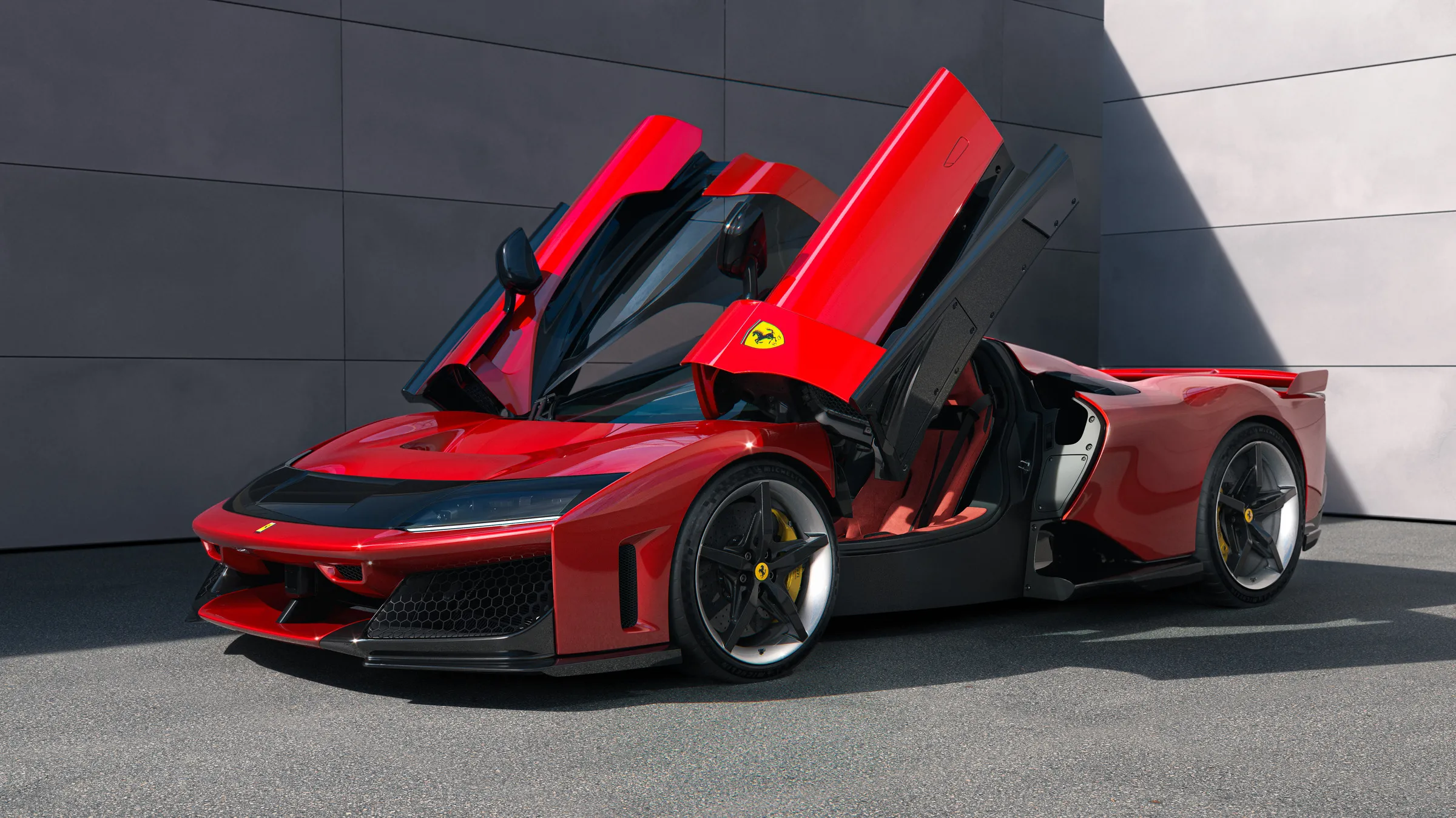
Ferrari unveiled the F80 marking a new chapter in the marque’s legendary supercar lineage, joining icons like the GTO, F40, and LaFerrari. Limited to just 799 units, it showcases Ferrari’s pinnacle of engineering and performance, blending cutting-edge hybrid technology with a turbo V6 powertrain inspired by motorsport victories like the 24 Hours of Le Mans.
The F80’s architecture is designed for maximum performance, featuring a carbon-fiber chassis, advanced aerodynamics, and active suspension. Innovations like an electric turbo system and an 800V hybrid setup deliver exceptional power, torque, and instant throttle response. Aerodynamic solutions, including an active rear wing and S-Duct, achieve 1000 kg of downforce at 250 km/h, while the electric front axle ensures optimal torque delivery with four-wheel drive capabilities.
The “1+” cockpit layout minimizes width for better aerodynamics and weight reduction, maintaining driver focus while offering passenger comfort. Inspired by aerospace and Ferrari’s storied past, the F80 embodies a futuristic yet heritage-rich design. This supercar combines extreme performance, advanced technology, and a race-bred soul to redefine Ferrari’s vision of the road-legal hypercar.
POWERTRAIN
INTERNAL COMBUSTION ENGINE
The Ferrari F80’s three-litre 120° V6 F163CF engine represents the pinnacle of Ferrari’s six-cylinder technology, delivering an extraordinary 900 hp. Combined with a hybrid system featuring an e-4WD front axle and rear MGU-K motor, total output reaches 1,200 hp. Derived from the 499P endurance racing engine, it shares components such as the crankcase, timing system, oil circuits, and injectors, while also incorporating Formula 1-inspired technologies like the MGU-K and MGU-H e-turbo systems for enhanced efficiency and performance.
This engine introduces Ferrari’s first use of statistical knock control, enabling operation near the knock limit and allowing 20% higher combustion chamber pressures than the 296 GTB. Dynamic torque calibration for each gear, another first, ensures naturally aspirated responsiveness across conditions. The e-turbos, with axial electric motors, eliminate turbo lag and optimize power delivery at all speeds.
Key innovations include a 350-bar GDI system for efficient fuel-air mixing, revised cam profiles for fluid dynamics, and polished intake and exhaust runners. The exhaust manifolds and crankshaft are engineered to enhance the V6’s signature sound and reduce weight. Titanium connecting rods and optimized aluminum pistons withstand extreme pressures while improving lubrication.
The engine’s lowered installation position, facilitated by a compact flywheel and tilted drivetrain, enhances the car’s center of gravity and aerodynamics. Despite a 237 hp increase over the 296 GTB’s V6, the F80’s engine maintains the same weight, thanks to lightweight materials like Inconel® and titanium screws. This engine epitomizes Ferrari’s commitment to performance, innovation, and engineering excellence.
HYBRID POWERTRAIN
The F80’s electric motors, Ferrari’s first entirely in-house design, combine lightweight construction and high performance. Positioned with two on the front axle and one at the rear, these motors incorporate Halbach array rotors and carbon-fiber magnet sleeves for enhanced magnetic flux and a top speed of 30,000 rpm. The stator features concentrated windings and Litz wire to reduce weight and high-frequency losses, while resin coating improves heat dissipation.
A Ferrari-developed DC/DC converter efficiently handles three voltages (800V, 48V, 12V) with over 98% conversion efficiency, powering components like the e-turbo and control units while eliminating the need for a 48V battery. The front axle integrates motors, an inverter, and a cooling system, enabling torque vectoring and saving 14 kg over prior designs. Its optimized lubrication system reduces mechanical losses by 20%, while HCR gears cut noise by 10 dB.
The inverter converts direct to alternating current for motor power and manages regenerative braking energy, contributing to the front axle’s 210 kW output. A rear inverter powers the MGU-K, providing 70 kW in regenerative mode and 60 kW to assist the engine. Both inverters feature Ferrari Power Pack systems for compact, efficient power conversion.
The high-voltage battery, with Formula 1-inspired lithium cells, carbon-fiber casing, and patented cell-to-pack design, offers 2.3 kWh capacity and 242 kW output. Positioned low to improve dynamics, it incorporates integrated circuits and Ferrari’s CSC sensor suite for precise monitoring, ensuring optimal performance and reliability.
AERODYNAMICS
The Ferrari F80 achieves unprecedented aerodynamic performance, generating 1000 kg of downforce at 250 km/h. This remarkable feat results from seamless integration across Ferrari’s design teams, balancing downforce and speed for ultimate efficiency.
The front end, producing 460 kg of downforce, employs Formula 1 and WEC-inspired solutions like a high central keel, triplane wing, and S-Duct. These elements maximize airflow efficiency, generating a powerful low-pressure zone beneath the underbody, aided by active suspension that maintains optimal ground clearance. Innovative bargeboards further enhance underbody suction and mitigate front wheel wake.
The rear zone contributes 590 kg of downforce through a sophisticated rear wing-diffuser system. The diffuser, extended to a record-breaking 1800 mm, creates significant low-pressure zones, optimizing airflow under the car. Narrow, curved chassis sills enhance aerodynamic sealing, channeling airflow to prevent disturbances.
The adaptive rear wing dynamically adjusts its angle of attack to balance downforce and drag. In High Downforce mode, it delivers 180 kg of downforce during braking and cornering, while in Low Drag mode, it minimizes resistance for higher speeds. Coupled with the Active Reverse Gurney flap under the front wing, the F80’s aero system adjusts in real time based on driver inputs, ensuring optimal performance across dynamic conditions.
These integrated systems, inspired by motorsport technology, establish the F80 as a benchmark for road car aerodynamics, blending exceptional downforce with unparalleled speed and handling.
HEAT MANAGEMENT
The cooling system of the F80 required meticulous design to balance the thermal needs of the engine (dissipating over 200 kW during performance) and hybrid system while maintaining aerodynamic efficiency. The goal was to create a compact, aerodynamically optimized system.
Radiators are strategically positioned to maximize cold air flow and minimize hot air interference, enhancing thermal efficiency. Innovations include a windscreen with a transparent demisting film powered by a 48V circuit to reduce HVAC load and electrically actuated climate control valves for improved energy management. At the front, two condensers and three radiators cool the climate control, battery, active suspension, and V6 engine. Hot air venting minimizes aerodynamic disruption, with lateral radiators venting into the wheelarch and central radiators into the bumper-bonnet zone.
The F80’s flank incorporates a multifunctional channel that directs airflow while preventing thermal contamination. A winglet atop the air intake captures high-energy airflow, feeding the engine and intercooler for increased efficiency. Braking system cooling leverages hollow chassis structures to channel airflow, a patented Ferrari innovation that boosts cooling by 20% without aerodynamic compromise.
VEHICLE DYNAMICS
The F80 features cutting-edge vehicle dynamics technology for exceptional performance on road and track. Its Ferrari Active Suspension, reengineered for the F80, includes 48V electric motors, double wishbone layout, and 3D-printed upper wishbones for precise control, reduced mass, and enhanced energy management. This system ensures a flat ride on track while absorbing road bumps, maintaining optimal downforce and stability in all conditions.
The advanced SSC 9.0 system, with Ferrari Integrated Vehicle Estimator (FIVE), uses a digital twin to enhance real-time dynamics control. It estimates yaw angle and mass velocity with unmatched precision, improving traction and stability. The hybrid powertrain offers three eManettino modes: ‘Hybrid’ for efficiency, ‘Performance’ for sustained track performance, and ‘Qualify’ for maximum power. The innovative Boost Optimization adjusts power delivery based on track layout for optimal performance.
Braking is powered by CCM-R Plus technology, co-developed with Brembo, offering twice the mechanical strength and three times the thermal conductivity of previous systems. F1-inspired cooling channels and SiC-coated discs ensure durability and consistency under extreme conditions.
Michelin co-developed Pilot Sport Cup2 and Cup2R tyres for exceptional grip and usability. For daily convenience, the F80 includes comprehensive ADAS features like Adaptive Cruise Control, Automatic Emergency Braking, Lane Keeping Assist, and more, blending track performance with practical road use.
CHASSIS AND BODYSHELL
CHASSIS
The F80’s chassis employs a multi-material design, optimizing materials for specific tasks. The cell and roof are crafted from carbon fiber and composites, while the front and rear subframes are aluminum, fastened with titanium screws. An additional aluminum subframe at the rear supports the battery.
The subframes use closed-end extrusions and cast elements, while the carbon fiber tub features hollow sills as primary load-bearing structures. The roof and tub incorporate innovative dual tubular bladders and carbon-fiber sandwich panels for strength. The sills act as side impact absorbers, with an asymmetric cabin layout optimizing each side: the driver’s side includes an adjustable seat with extended safety measures, while the passenger side uses a fixed seat to save weight without compromising safety.
Front aluminum longerons double as brake cooling air ducts, with Ferrari’s new casting technology reducing wall thickness by 23%. These advancements reduce weight by 5%, improve torsional and beam stiffness by 50%, and enhance NVH, delivering exceptional performance and comfort.
BODYSHELL
The F80’s bodyshell, crafted from pre-preg carbon fiber and cured with motorsport-derived technology, is entirely new. The front bonnet incorporates an S-Duct connecting the front wings, enhancing aerodynamics.
Butterfly doors, similar to the LaFerrari, use a dual-axis hinge to open vertically up to 90°. Their carbon-fiber substructure absorbs lateral impact loads, ensuring structural integrity.
The rear engine cover features six slots and a grille for efficient hot air ventilation from the V6 engine, blending functionality with sleek design.
DESIGN
EXTERIOR
The F80 represents a bold evolution in Ferrari design, blending futuristic aesthetics with nods to the marque’s heritage. Designed by Flavio Manzoni’s team, it features a dihedral cross-section architecture and aerospace-inspired visuals. The sculpted rear emphasizes muscularity, while the front incorporates architectural elements like a vertical wheel arch panel, echoing the F40.
The cabin, a floating bubble structure, sits 50 mm lower than the LaFerrari’s greenhouse, enhancing the car’s compact, broad-shouldered appearance. Concealed headlamps within a black visor element add to its distinctive look.
The short-tail rear offers two configurations—stowed or deployed mobile wing—with a layered design integrating the tail lights for a sporty appeal. Functional elements like the NACA duct for air intake and lateral radiators, and the six-slot louvred engine spine symbolizing the cylinders, merge functionality with iconic styling, creating a striking and innovative design language.
INTERIOR
The F80’s cabin, inspired by a single-seat racer, creates the feel of an enclosed Formula 1 car. A longitudinal offset positions the passenger seat slightly behind the driver’s, enabling a narrower interior without sacrificing ergonomics or comfort, reducing the car’s frontal cross-section.
A newly designed steering wheel debuts with the F80, set to appear in future Ferrari models. Smaller with flattened top and bottom rims, it improves visibility and enhances sportiness. Optimized for grip, the wheel reintroduces physical buttons on the spokes for intuitive operation, replacing the recent full-digital controls.
7-YEAR MAINTENANCE
Ferrari also offers an exclusive seven-year maintenance program with the F80, a first for its supercar range. Covering all regular maintenance, it ensures peak performance and safety throughout the car’s first seven years. This program is also available to pre-owned Ferrari owners, reflecting Ferrari’s commitment to quality and client service.

